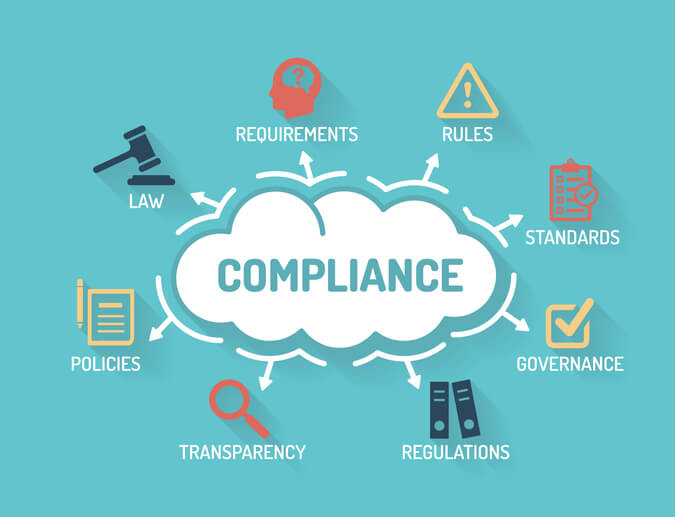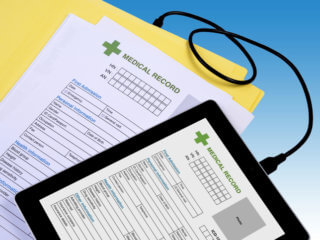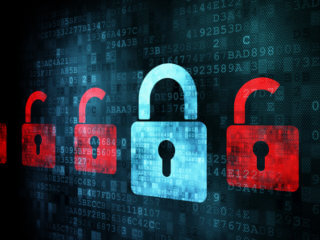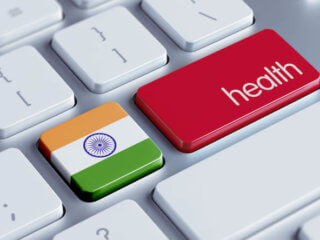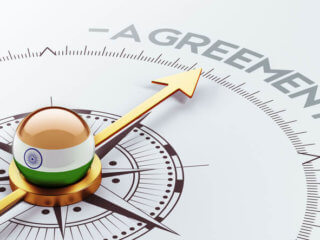Why a regulatory & policy framework for medical devices in India
Medical device industry offers exciting opportunities to both local & global players due to rise in demand for healthcare services. The sector currently worth about US$ 5.5 billion and is projected to reach US$ 8.6 billion by 2020. The medical devices could vary from modest devices such as thermometers and dispensable gloves to X-ray, CT scan, MRI machines and implantable devices such as stents and artificial joints. All such life-saving devices need regulatory & policy framework for medical devices in India.
The market slowly by imported products, which includes approximately 75% of total sales. The local organizations are mainly involved in manufacturing affordable products for local as well as international usage.
There are some key elements which every new player in this market needs to be aware of:
- One does not require any prior prerequisite for foreign direct investment in medical device manufacturing.
- Additionally, you have an enormous scope of innovation in India’s robust legal system.
- India boasts strong patent, trademark, and copyright protection with its Trade-related conditions of Intellectual Property Rights.
- No import duty on some medical equipment.
- Individual life-saving medical equipment is exempted from payment of excise duty.
- The Indian government has incentivized scientific investigation and development by catering weight deduction.
| Recommended for you | |
| Live hacking of embedded medical devices | |
| Regulatory and policy framework for digital health India | |
| 108 Health insurance companies in India |
Regulations for medical devices in India
An exciting feature is a ban on advertisement of medical devices claiming cure of notified aliments. The regulatory framework in India applicable to medical devices adopts slowly from the regulatory environment applicable to drugs.
At present, only 15 types of medical devices are regulated, and rests are unregulated. After high endeavours from various stakeholders in the market, the government has notified the Medical Device Rules, 2017, which separates regulatory norms for manufacturing medical devices from drugs. These new rules will come into effect on the 1st of January, 2018. The primary focus of these practices is to ease norms for obtaining a license and conducting clinical trials and also reduced manufacturer-regulator interface.
Make in India initiative launched by the Government presents a platform for the sector to redefine the operating model, identify key essentials for growth and explore new prospects for creating a step change in the medical devices industry. The industry would face significant challenges like price control and effect of the new rules envisaged by the government.
However, any new player (domestic and multinational) in the market would see this as an exciting business opportunity with new measures, the amount of investment and legal support.
Regulatory framework for medical devices in India
Doing business in India is a combination of challenge and opportunity for new players. However, in recent times, increasing government and foreign investment have sparked eyes of many foreign medical device companies. They need to consider current economic and political scenario, the business model according to the location of end users and quality of its workforce.
New investors or companies need to keep an eye on exchange control laws as they supervise how gains made by the business can be taken out. Several times, if the investment is made through agreeable tax jurisdictions, it may lead to substantial tax savings. Lastly, if a company is operating as a wholly-owned subsidiary in India, it must ensure that the subsidiary is complaint with regulating framework and other product obligatory laws to avoid legal proceedings.
As discussed earlier, medical device sector in India is largely unregulated mainly because of the absence of specific standards for safety and quality of most of them. However with newly proposed Medical Device Rules, 2017 this scenario is expected to change as the medical devices separated from the drugs act. Hence the few regulated medical equipment (fifteen) are regulated under the Drugs and Cosmetics Act, 1940 and the norms framed thereunder like Drugs and Cosmetics Rules, 1945. These devices referred as Notified Medical Devices, and they do not require any certificate of approval from any particular authority.
The Drugs and Cosmetics Act seeks
- Administer the import, manufacturing, dispersion, and sale of Notified Medical Devices.
- Make sure the availability of high standard Notified Medical Devices to the end-user.
Different authorities, licenses, standards, and terms
- Authorities: The Central Government and the State Governments are liable for the enforcement of the Act. The Central Drugs Standard Control Organization governed by the Drugs Controller General of India (DCGI) is mainly responsible for controlling the State authorities operations, developing policies, and ensuring consistent execution of the Act throughout India.
- Licenses needed for Import, Sale, Manufacturing, and Loan of Medical Devices under the Act:
1. Certificate of enrollment of the foreign manufacturer and the medical devices to be imported 2. Certificate of import for Notified Medical Devices 3. Certificate of import for testing, examining or analyzing Notified Medical Devices 4. License to import new Notified Medical Devices for marketing or a clinical trial 5. License for conducting clinical trial using new Notified Medical Device 6. License for manufacturing or importing new Notified Medical Device after satisfactory clinical trials 7. License or permission to sell Notified Medical Devices at retail store 8. License to wholesale of Notified Medical Devices 9. License for manufacturing Notified Medical Devices 10. Grant for making a Notified Medical Devices for testing, examining or analysis when no manufacturing license is available (Under Form 28) 11. Loan License for manufacturing Notified Medical Devices in facility owned by the third party - License for making a Notified Medical Device in India: A separate license or certificate is needed for each fabricating site and also for each Notified Medical Device at such site.
- Importation of Notified Medical Device in India: Importing all generic products in India, including medical devices, is controlled under the conditions of the Export and Import Policy. To import medical devices, one needs to obtain Importer and Exporter Code (IEC) from the Director General of Foreign Trade’s office. The IEC Number is mandatory in the documents filed with Customs for clearance of imported goods. Additionally, they will also require an import license from the office of the Drugs Controller General of India (DCGI).
Registration application of certificate made by a foreign manufacturer or company itself provided it has a valid wholesale license for sale of Notified Medical Devices under the Drugs and Cosmetics Act. Or its authorized agent in India, either having a valid license under the Act for manufacturing for sale of Notified Medical Devices or having a valid wholesale license for sale of Notified Medical Devices in India. Other documentation related requirements for import:1. Free Sale Certification from the country of origin granted by the Ministry of Health/National Regulatory Authority 2. Medical device regulatory status 3. USFDA approval for manufacture and free sale, for devices made in the USA 4. Approval to build and free sale, for devices made in Australia, Japan, and Canada 5. CE certification and adoption for manufacture and free sale certificate, for devices made in Europe 6. For other countries: License for manufacture and free sale in the respective country of origin besides the approval from any one of the: USFDA, Ministry of Health, Labor and Welfare Japan or CE Certification, Health Canada or TGA Australia is mandatory. - Manufacturing or importing new Notified Medical Device: Notified Medical Devices for which declared medical devices are not enrolled in India are classified as new medical devices. That means they fall into the category of National Medical Device, but do not have affirmed Notified Medical Device registered in India. They are adverted to the Medical Device Advisory Committees (MDAC) to pass their observation on safety, efficiency, nature, and suitability of proposed New Devices.
The importer or company for such devices may need to provide clinical data to fulfill the conditions set by MDAC. - Clinical Trials: As of now, there is no particular medical device regulatory framework for clinical trials in India. DGCI, which governs clinical Trails, has allowed for some alteration in the drug specific clinical trial structure to fit medical devices.
- Product Standards: Unless it meets the desired standard specified in the Drugs and Cosmetics Act, no Notified Medical Device is allowed to be imported, manufactured, sold or stock. The Central Government has the authority to ban the import, manufacture or sale of any Notified Medical Device.
- Labeling: Before a Notified Medical Device is marketed or sold in India, it must be labeled or tagged according to specifications defined in the Act. All medical devices sold in retail or wholesale are required to agree to the labeling requirements of The Legal Metrology Act, 2011. It must have all information such as name and address of the manufacturer, batch number, date, etc. While devices manufactured for export are excused from several requirements, imported devices must display the expiration date in addition to the import license number.
- Good Manufacturing Exercises: Every manufacturing company Notified Medical Devices in India has to agree with the QMS conditions of Schedule M III as a provision of its manufacturing license, else it might get canceled or suspended. (QMS is standard prescribed in the Drugs and Cosmetics Act)
- Penalties: Government’s Ministry of Health and Family Welfare had notified an amendment to the Act that tries to bolster the existing law against the threat of false medical devices in India. The penalties for sale or marketing of such Notified Medical Devices could be USD 16,667 or three times the amount of the disclosed medical device seized. It also includes imprisonment of 10 years or extended up to life, for the false notified medical device leading to death or grievous hurt.
- Restrictions on Import & Export: Ministry of Commerce and Industry has regulated imports and exports through the Foreign Sales/Trade (Development and Regulation) Act, 1992 in addition to Customs Act, 1962 and the Export-Import Policy. This policy aims to improve export performance, encourage foreign trade, etc.
- Advertising and Promoting Sale of Medical Devices: Advertising of medical devices is precisely regulated under the Drugs & Magic Remedies Act, 1954. The restrictions mentioned in the Act are applied to all medical devices, and some of these are of general nature.
- Drugs & Magic Remedies Act, 1954: This law was earlier used to Drugs, but is now extended to all medical devices. The Act bars advertising on diagnosis, cure, mitigation or prevention of 54 diseases and disorders like Diabetes, epilepsy, etc.
- Competition Act, 2002: Considering the growth of medical device industry, the government had enforced the Competition Act in 2002 to provide support and protection for companies involved in medical devices. The act includes all medical device manufacturers should supply the fixed prices and essential boundaries for mergers & takeovers.
- Patent Protection/Security: The Patents Act, 1970 governs all administration for Patents in India and is well assisted by the Patents Rule, 2003. Indian Patents Act backs licensing both the devices as well as their processes for 20 years. It includes,
1. Medical devices patentability 2. Application protocol 3. Correspondent imports 4. Constraints 5. Violations 6. Amendments before grants 7. Security clauses - Data Exclusiveness: Many local and multinational companies appealed the Government with a proposal to being a data exclusivity provision along with Indian Patents Act. However, the central government had declined to it. A committee found on this subject has given several recommendations on it. The Government has approved these recommendations on data exclusivity and might also protect against disclosure to the medical device firms.
- Trademarks: In India, Trademarks are secured under both statutory and uniform law. Trade Marks Act, 1999 permits the enrollment of hallmark of service as well as three-dimensional marks. A brand can be utilized without enrollment/registration under the uniform law but not under statutory law. Recently Indian courts have termed copying the international brand names as illegal (Even if a device made out of the country).
- Governments command over Medical Device prices: Essential Commodities Act, 1955 allows the Central government to control the manufacturing, stocking, and sale of essential commodities for ensuring their availability and distribution at fair prices. Usually, medical devices notified as critical assets, but they have not been notified yet. The Government has held several meetings of different importers, manufacturing companies, hospitals to understand their view on this subject and to take all considerations for fixing the prices. It is permissible for importers/manufacturers of Cardiac Stents and other Notified Medical Devices to remain beneficial despite price control by managing their association with hospitals and captivating the margins. It is also permissible for them to use some relaxations accessible in DPCO (cost control) for patented medical devices and specific therapeutic devices.
However, to monitor the prices of medical devices, the government needs to notify them as “essential commodity.”
New Medical Device Rules, 2017
The Indian government has envisaged Medical Device Rules, 2017, which is nothing but regulatory norms for all medical devices. These will come into effect in January 2018, unless a new date is proposed.
Key points of these rules
| 1. Medical devices definition: Only products covered by this definition will be regulated under these rules |
2. Risk-based classifications system for medical devices: The classification of medical devices as:
|
| 3. Single-window clearance for all applicants |
| 4. Standards for medical devices |
| 5. Assured and streamlined timelines for licenses |
| 6. Permanent licenses |
| 7. Registration certificate integration and authorized agents for importing & selling medical devices |
| 8. Assurance on change in outcomes of particulars mentioned in license |
| 9. Significance of change in constitution is eventually mentioned and rationalized in these rules |
| 10. Licenses for selling of medical devices |
| 11. Obligatory revokes on wisdom of risks involved in medical devices |
| 12. New boundaries for residuary shelf-life for all imported products/devices |
| 13. New regulative model for medical research of medical devices |
| 14. Prohibition on supplying deceptive or false information |
| 15. Next measures for existent importers, sellers and producers/manufacturers |
However, even after implementation of these rules medical devices will continue to be considered as drugs. It is because the definition of medical devices mentioned linked to the definition of drugs under this Act.
Taxes involved in Medical Device sector
Every new investor or manufacturing company entering in this market also needs to study tax structure related them. They are mentioned in below table.
| 1. Direct Taxes | 2. Indirect Taxes |
|---|---|
| (a) General taxes: Taxes on companies, Dividends, Interests, fees for technical services, Capital gains & Withholding taxes | (a) Service tax |
| (b) Incentives under Income Tax Act: In-house research, development, Contributions to colleges, universities & Capital expenditure | (b) Custom duties |
| (c) Potential taxes under Permanent Establishments Place of possible creation, Service taxes and Agency taxes |
(c) Sales and Value added tax |
| (d) Organizing investment through Treaty Jurisdiction | (e) Goods & Services Tax (implemented 1st July 2017) |
| (e) Transfer pricing regulations in India | (f) Cess on Research & Development |
| (f) Prohibition on deduction in expenses incurred in False promotion |
List of regulated medical devices in India (Notified Medical Devices):
- Dispensable Hypodermic Syringe
- DispensableHypodermic Syringe
- Dispensable Infusion Sets
- Tube Diagnostic tools for HIV, HCV &HBsAg
- Stents for Cardiac
- Drug Stents
- I. V. Tube
- Bone-cements
- Heart valves
- Catheter pipe
- Set for Scalp-vein
- Orthopedics implant
- Internal prostheses implants
- Intra-visual Lenses
- Removal devices
Overall, Indian medical device industry continues to grow with support from a strong legal framework of India. Government’s Digital India primarily focuses on promoting new ventures with ease of doing business and compliances. Hence the industry offers unique and exceptional opportunity for both present and potential players involved.
Image credit: www.istockphoto.com

